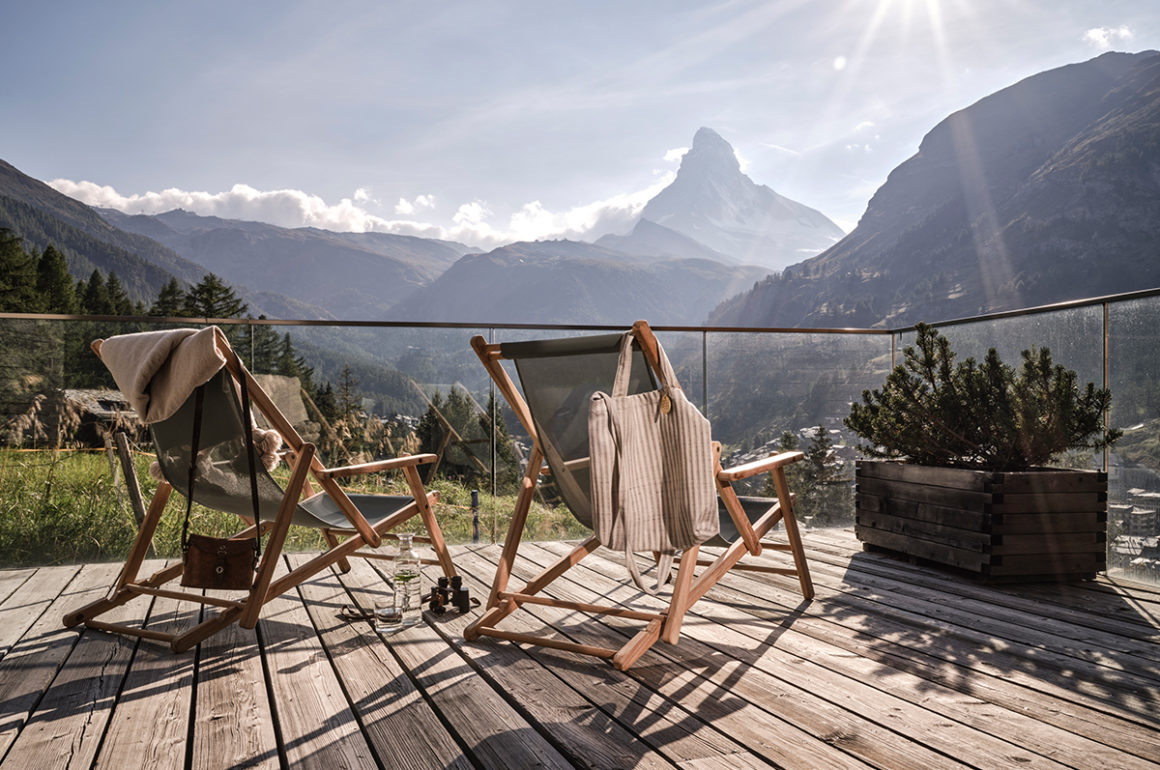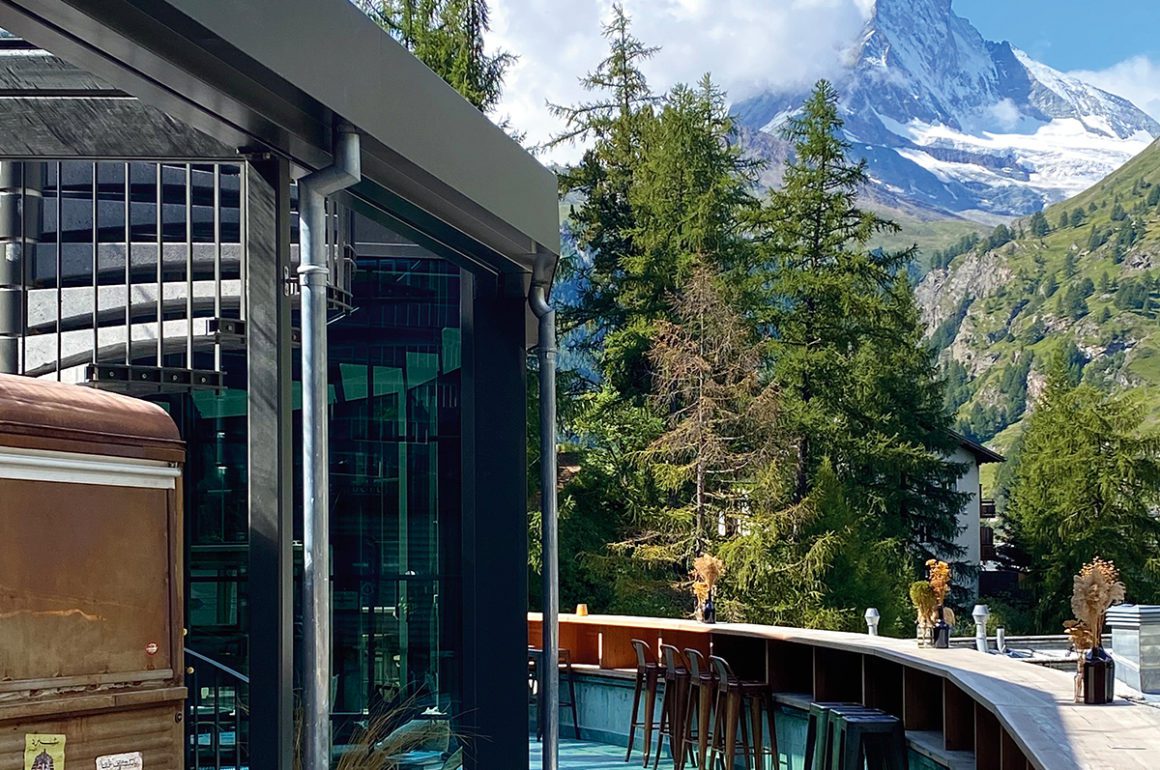
The terrace at Cervo Mountain Resort
The arrival
To get to the Cervo, you have first to arrive in Zermatt, an adventure in itself. The train (the resort is only accessible by train) winds through the highest part of a narrow Alpine valley, which opens out into a bowl, lined by steep forested sides, in which Zermatt, one of Switzerland’s most famous mountain villages, spreads itself.

Cervo Mountain Resort during the winter
The Cervo sent an electric cart, of the type that have to be used in Zermatt, to pick us up: we sent our luggage on the cart and decided to walk, to take in the place. As we crossed the blue-green torrent of a river, the Matterhorn, a pyramid of rock and snow, appeared from behind the clouds at the end of the valley to the right.
Follow LUX on Instagram: luxthemagazine
The Cervo is built on the steep mountainside on the east side of the valley, edged by forest. One of the most environmentally-acclaimed hotels in Switzerland, it draws all its interior and exterior furniture and accessorise from recycled or second hand materials. The last few metres were steep, but satisfying (we later learned there is a lift from the valley floor).

Madre Nostra restaurant terrace in Winter
Reception is tucked amid a smorgasbord of vintage items (some for sale, most not), reclaimed woods, and decorative features, many of them sourced from markets around the world, suggesting a 60s hippie trail adventure: Morocco, Iran, the Silk Road. It’s Alpine luxury remade for a new generation.

A bathroom at Cervo Mountain Resort
The in-room experience
The Cervo is an agglomeration of wooden buildings spread along the mountainside. Our bedroom faced the Matterhorn, with Zermatt spread below us; a little terrace and private garden provided excellent sunbathing opportunities, and we could feel and smell the forest all around.
Read more: Switzerland, our top pick for summer
The sustainability ethos was carried through to the rooms: slippers were made of recycled materials, there were no plastic bottles either in the bathrooms or the in-room bar, which, in its aesthetics and choice, could have made a passable destination bar: in a purpose-built cabinet, it featured specialist local spirits and mixers, country-style cups and mugs, and vintage-style glasses.

A bedroom at Cervo Mounatin Resort
The out-of-room experience
Comprising a cluster of buildings along the mountainside, the Cervo requires a bit of concentration for navigation. We had a light dinner in Bazaar, the north-African style restaurant by Reception, with its stunning decor made largely of found materials.

Bazaar Restaurant
Our most memorable meal was at Madre Nostra, an indoor-outdoor restaurant which stretches across the bar terrace, and in summer has a Mykonos-type feel. Cocktails and Italian wines were rushed about the terrace by young, keen, friendly staff (no old-school condescension here) and as for the food: focussed on ingredients within a short radius of the resort (quite a challenge high in the Alps), the home-made pasta and simple grilled chicken and beef with local herbs were such a hit, we cancelled our meal out the next night just to experience it again.

Inside Madre Nostra restaurant
Beyond the hotel
The Cervo is literally a stepping off point for Zermatt, the most celebrated summer mountain resort in the Alps. If you’re an expert climber, you can scale the Matterhorn, or Switzerland’s highest mountain Monte Rosa, or its second highest, Dom, all of which tower over various parts of the valley. Or you can take long hikes above and below the tree line and admire the mountains from the terrace of a gastronomic mountain hut. The Cervo also has its own paragliding school, and outdoor activity options are almost infinite.

Cervo Mountain Resort hotel opens on June 24 for the summer season
Drawbacks
It’s a ten minute walk, or five minute electric taxi ride, to the centre of the resort and the busy high street: the price you pay for those views from the valley sides, and we loved the exhilaration of the walk back.
Rates: From £230 average per night (approx. €270/$290)
Book your stay: cervo.swiss/en
Darius Sanai
















Recent Comments